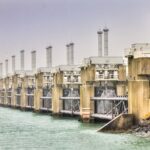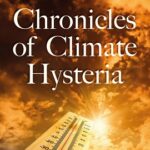Amazongate: At last we reach the source
The IPCC’s attempts to hide the truth about its exaggerated claims on the deforestation of the Amazon have ended in defeat, says Christopher Booker.
Last week, after six months of evasions, obfuscation, denials and retractions, a story which has preoccupied this column on and off since January came to a startling conclusion. It turns out that one of the most widely publicised statements in the 2007 report of the UN’s Intergovernmental Panel on Climate Change – a claim on which tens of billions of dollars could hang – was not based on peer-reviewed science, as repeatedly claimed, but originated solely from anonymous propaganda published on the website of a small Brazilian environmental advocacy group.
The ramifications of this discovery stretch in many directions. First, it seems to show that the IPCC – whose reports governments rely on to justify presenting mankind with the largest bill in history – has been in serious breach of its own rules.
Second, it raises hefty question marks over the credibility of the world’s richest and most powerful environmental pressure group, the WWF, credited by the IPCC as the source of its unsupported claim.
And third, it focuses attention once more on a bizarre scheme, backed by the UN and promoted by the World Bank, whereby the WWF has been hoping to share in profits estimated at $60 billion, paid for by firms all over the developed world.
“Amazongate”, it may be recalled, was one of the rash of scandals which rocked the authority of the IPCC last winter, when it was revealed that many of the more alarmist statements in its 2007 report originated not from peer-reviewed science but from papers written by environmental pressure groups. One which aroused particular controversy was a warning that climate change was putting at risk up to 40 per cent of the Amazon rainforest. Chapter 13 of the IPCC’s Working Group II report on “climate impacts” specifically claimed that “up to 40 per cent of the Amazonian forests could react drastically to even a slight reduction in precipitation”. It went on to say that this would cause such chaos in local climate systems that the forest could rapidly revert to savannah.
The only source cited for this claim was the Global Review of Forest Fires, a paper written for WWF and the International Union for Conservation of Nature in 2000, the lead author of which was an environmental activist and freelance journalist. This in turn appeared to cite a paper published in 1999 by a team led by Dr Daniel Nepstad, “senior scientist” with another advocacy group closely linked to the WWF, the Woods Hole Research Center. However, Nepstad’s paper was primarily concerned not with climate change but with the impact of logging and fires.
When this created a storm last January, the WWF quickly issued a “clarification”, stating that its own paper “does not say that 40 per cent of the Amazon forest is at risk from climate change”. But it went on to say that the real source of the claim quoted by the IPCC was a document, Fire in the Amazon, published by the “respected Instituto de Pesquiza Ambiental da Amazonia (IPAM)”. Headed by Nepstad, IPAM is a Brazilian advocacy group, also closely linked with the Woods Hole Research Center.
The document cited by the WWF, which it later described, after a full internal inquiry, as a “report”, proved remarkably difficult to track down. Since then, both the WWF and Dr Nepstad have cited other papers in support of their claim – but none of these provided any support for the specific claim about the impact of climate change made by the IPCC.
Only now, after I was able to confront them with evidence from an internet archive, has the WWF finally admitted the precise origin of the IPCC’s much-quoted claim. Fire in the Amazon, it turns out, was not a “report” or a scientific paper but, as the WWF now acknowledges, a “text published by IPAM… on its website in 1999”. It was merely a brief, anonymous and unreferenced note on the exposure of the forest to fire risks, posted in February 1999 and taken down four years later. Here, at last, is the sole source for the statement later published by the IPCC.
The original read: “Probably 30-40 per cent of the forests of the Brazilian Amazon are sensitive to small reductions in the amount of rainfall.” This was hyped up in the final drafting of the IPCC report, to claim that “up to 40 per cent of the Amazonian forests could react drastically to even a slight reduction in precipitation”. “Brazilian Amazon” – only around half the total rainforest area – was changed to include the entire forest. The word “sensitive” was changed to “react drastically”. And the original IPAM note had made no mention at all of climate change.
To begin with, this would seem to justify a formal complaint to the IPCC that it was acting in breach of its own rules. Annex 2 of its rules of procedure lays down that non-peer-reviewed material should only be cited when it has been subjected to rigorous critical appraisal and that “each chapter team should review the quality and validity of each source before including results from the source into an IPCC report”.
Last week I put it to the IPCC that it should at least acknowledge this blatant breach of its rules and withdraw the passage, as it did last winter when it was revealed that it had no scientific basis for claiming that Himalayan glaciers could disappear by 2035. To date I have had no reply.
Lees de rest van dit must read artikel -> telegraph.co.uk






Geef een reactie